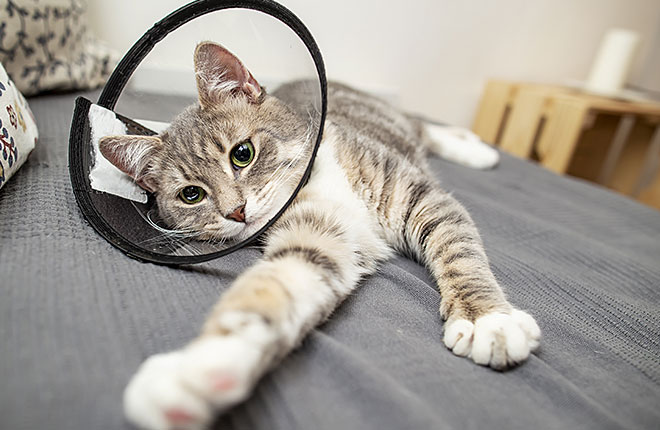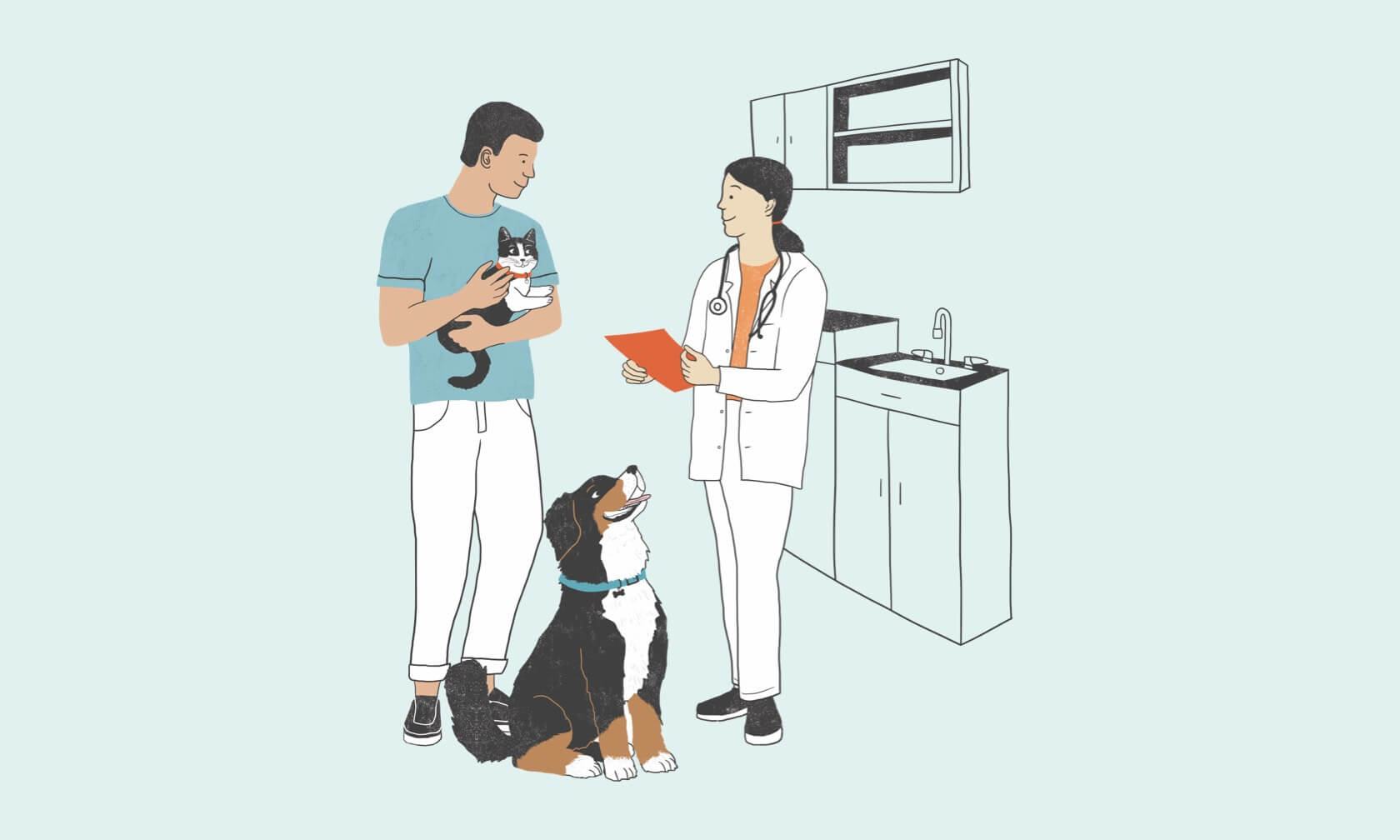It’s not uncommon for cats to “go a couple of rounds”, even if they’re usually best buds. But fighting cats can turn into biting cats, and those bites can easily get infected with bacteria and turn into skin infections and abscesses. Here’s what you need to know about cat bite abscesses and how to treat them.
The Basics of Cat Bite Abscesses
When one cat sinks their tiny razor-sharp teeth into another cat, they make a puncture wound that leaves bacteria from the mouth deep into the skin and muscles. The skin rapidly heals over, leaving the bacteria to multiply and infect the deeper tissues. The not-so-pretty result is often an abscess, which is an infected wound that can swell up, ooze pus and even burst. Abscesses are very painful for cats and can even cause a fever.

If the cat is fighting with a cat that is infected with certain diseases, such as feline immunodeficiency virus, feline leukemia virus, rabies, or Bartonella, they are also at risk for getting those diseases.
It’s not easy to find a bite wound or abscess under all that fur, and the early warning signs are subtle. But here are some symptoms to watch out for:
- Skin irritation/redness
- A bald spot or matted fur
- A lump or swollen area
- Limping (if the bite wound is on a leg)
- Hissing, scratching, or biting when being petted
- Lethargy
- Lack of appetite
- An unusual odor
Where Cat Bites Show Up
Cats typically bite each other in the head/neck, forelegs, or on the butt/back legs. If you think your cat has been in a recent brawl, pay close attention to those spots for signs of a bite. Don’t be surprised if you find more than one bite!
Treating Cat Bites and Abscesses
If you think your cat has a bite or an abscess, call your veterinarian’s office right away. The bite area needs to be examined and cleaned, and your cat might need antibiotics, pain medication, and/or possibly even surgery. Earlier veterinary treatment typically results in the best outcome for your cat.
If the bite has already progressed to an abscess, and it’s going to be more than a day until you can get in with your vet, consider a trip to an animal emergency clinic. This will minimize your cat’s pain and discomfort (and the risk of the abscess rupturing).
How to Prevent Your Cat from Being Bitten
Neutering your cat can decrease the possibility of them being bitten, but it may still happen because cats are territorial and will fight to defend their property. The best way to prevent your cat from being bitten is ultimately to keep your cat indoors.
ZPC-00541R1
Important Safety Information: People with known hypersensitivity to penicillin or cephalosporins should avoid exposure to Convenia. Do not use in dogs or cats with a history of allergic reactions to penicillins or cephalosporins. Side effects for both dogs and cats include vomiting, diarrhea, decreased appetite/anorexia and lethargy. See full Prescribing Information.




